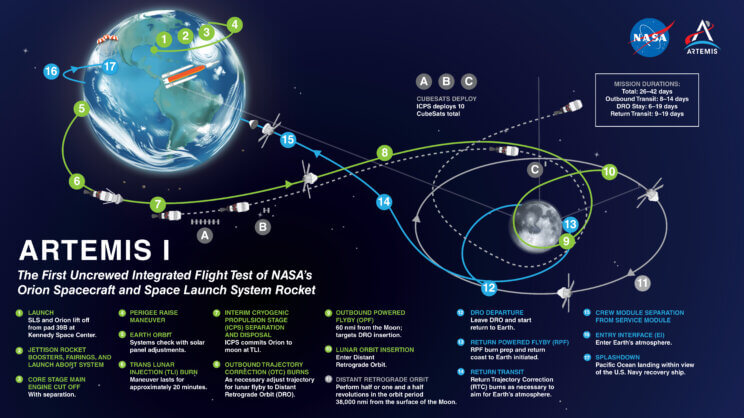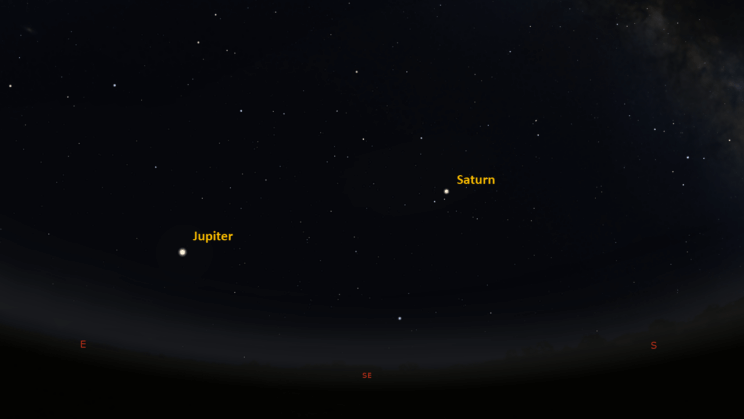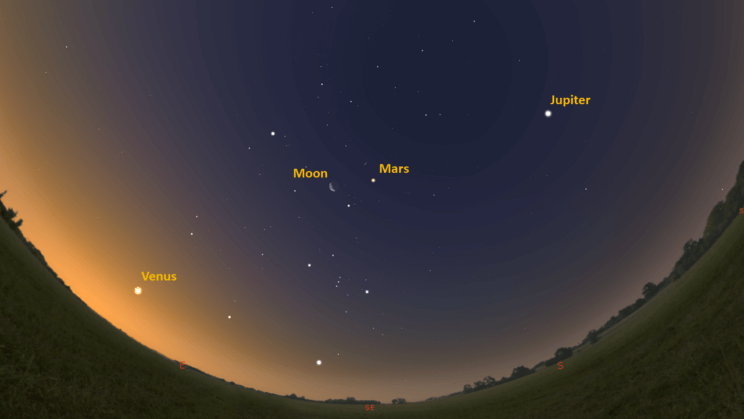This is the Saint Louis Science Center’s NIGHT SKY UPDATE for the week of Friday, August 19, 2022.
Information updated weekly or as needed.
Times given as local St. Louis time which is Central Daylight Time (CDT). For definitions of terminology used in the night sky update, click the highlighted text. If relying on times posted in Universal Time (UT), St. louis is -5 hours when CDT.
Public Telescope Viewings
Public telescope viewings at the McDonnell Planetarium have returned as part of the Saint Louis Science Center’s First Friday event. As we ease back into our telescope nights, they will operate a little different than before. To take part in our telescope viewings you will need to get a ticket for the planetarium show that starts at 7:00 p.m. as part of the First Friday event. Tickets for the First Friday planetarium show are free, but they can only be picked up at the Saint Louis Science Center on the night of the event. After the planetarium show ends you will be able to go outside and look through telescopes weather permitting. We will update this posting if anything changes.
Solar telescopes viewings have also returned and will take place every Sunday from 11:00 a.m. to 3:00 p.m. weather permitting. Solar Sundays will run from May 29, 2022, to September 4, 2022. The return of Solar Sundays is a good opportunity to prepare for the upcoming solar eclipses in 2023 and 2024.
Observing Highlight of the Week

Artemis I mission graphic. Image credit: NASA, ARTEMIS. Original image can be found at https://www.nasa.gov/image-feature/artemis-i-map
This week, the Moon will exhibit last quarter through new moon phases. As it orbits Earth, we will see the Moon pass by the planets Mars and Venus this week along with a few other points of interest. For most the Moon will not be ideal to observe this week due to its early morning rise times but for those early birds the Moon will be a treat to see.
At the start of the week, the Moon will be ideal for daytime views. Heading out around 8:00 a.m., on Friday, you will see the Moon high in the south. Each day, the Moon will appear to get closer to the Sun as it wanes through its crescent phases. As we approach new moon on August 27, 2022, it is advisable to stop daytime views of the Moon due to its proximity to the Sun in the sky. For safety purposes, the ideal time frame for spotting the Moon this week in the daytime will be from August 19 to August 22 before noon.
On August 19, 2022, the Moon will appear near Mars in the sky. Views of the pair will be best before sunrise as the Moon will appear 3° north of Mars. If you miss the pair on Friday morning, you can also see the Moon just past Mars on August 20, 2022.
Later in the week, on August 25, 2022, you can find the Moon west of Venus just before sunrise. By 5:45 a.m., the Moon will be roughly 13° about the eastern horizon and Venus will be about 6° above the horizon. The Moon should be reasonably easy to spot, but Venus will be tough if you have trees to compete with. If you can spot the Moon this morning, you will only see about 3.4% of the lunar surface reflecting sunlight. The growing twilight could pose a challenge, but binoculars will make things easier. Just make absolute sure the Sun has not risen if you plan to try binoculars. The Sun rises at 6:24 a.m. on the morning of August 25, 2022.
Lastly, on August 29, 2022, NASA tentatively plans to launch the Artemis I mission at 7:33 a.m. CST. This is exciting news as the Artemis I mission is the next step to seeing humans return to the Moon. Artemis I is an uncrewed mission that is an integrated flight test of NASA’s Orion Spacecraft and Space Launch System Rocket. Artemis II is expected to follow in 2024 and will be the first crewed Artemis mission and Artemis III will be the first crewed mission to return to the lunar surface. Artemis III is expected to occur sometime in 2025. For those interested in watching the launch of Artemis I on August 29, 2022, weather permitting, tune in to NASA TV. Various factors can cause a launch to scrub such as weather and technical difficulties. More information regarding Artemis I can be found HERE.
The Sun and Moon

The Moon as seen from the International Space Station, on July 31, 2011.
Credit: NASA
Sunrise is at 6:18 a.m. on Friday, August 19 and sunset is at 7:49 p.m. providing us with roughly 13.5 hours of daylight. Even after sunset, the light from the Sun will dimly illuminate our sky for roughly 1 hour and 40 minutes. This period is called twilight, which ends around 9:27 p.m. this week. For those with a sundial, local noon occurs around 1:04 p.m. this week.
| Day | Sunrise | Sunset |
|---|---|---|
| 2022-08-19 | 6:18 a.m. | 7:49 p.m. |
| 2022-08-20 | 6:19 a.m. | 7:48 p.m. |
| 2022-08-21 | 6:20 a.m. | 7:47 p.m. |
| 2022-08-22 | 6:21 a.m. | 7:45 p.m. |
| 2022-08-23 | 6:22 a.m. | 7:44 p.m. |
| 2022-08-24 | 6:23 a.m. | 7:42 p.m. |
| 2022-08-25 | 6:24 a.m. | 7:41 p.m. |
| 2022-08-26 | 6:25 a.m. | 7:40 p.m. |
| 2022-08-27 | 6:26 a.m. | 7:38 p.m. |
Moon
Moonrise for Friday, August 19 occurs after midnight at 12:12 a.m. and moonset occurs at 3:31 p.m. the following day. Friday, August 19, the Moon will exhibit a waning crescent phase with roughly 48% of the lunar disk illuminated. Once it rises after midnight the lunar disk will be only be 40 % illuminated. New moon occurs on August 27, 2022, at 3:17 a.m.
International Space Station (ISS) Observing

Visible passes of ISS from St. Louis for the week of August 19 occur during morning hours. The best passes this week occur on August 23 and 26. Use the table below for information about these and other visible passes this week.
Catch ISS from St. Louis starting Friday, August 19
| Date | Starts | Max. altitude | Ends | |||||||
|---|---|---|---|---|---|---|---|---|---|---|
| Time | Alt. | Az. | Time | Alt. | Az. | Time | Alt. | Az. | ||
| 21 Aug | -1.5 | 05:27:54 | 10 | S | 05:30:27 | 12 | SE | 05:33:01 | 10 | E |
| 23 Aug | -3.5 | 05:27:01 | 14 | SW | 05:29:43 | 64 | SE | 05:33:02 | 10 | ENE |
| 24 Aug | -2.6 | 04:40:36 | 31 | SSE | 04:41:10 | 33 | SE | 04:44:13 | 10 | ENE |
| 25 Aug | -1 | 03:54:05 | 15 | E | 03:54:05 | 15 | E | 03:55:05 | 10 | E |
| 25 Aug | -3.1 | 05:26:59 | 18 | W | 05:29:10 | 43 | NW | 05:32:24 | 10 | NE |
| 26 Aug | -3.9 | 04:40:24 | 76 | NW | 04:40:28 | 77 | NW | 04:43:49 | 10 | NE |
| 27 Aug | -1.3 | 03:53:45 | 22 | ENE | 03:53:45 | 22 | ENE | 03:55:08 | 10 | ENE |
| 27 Aug | -1.8 | 05:26:39 | 12 | WNW | 05:28:47 | 20 | NNW | 05:31:23 | 10 | NNE |
Magnitude (Mag): The Measure of brightness for a celestial object. The lower the value is, the brighter the object will be.
Altitude (Alt): The angle of a celestial object measured upwards from the observer’s horizon.
Azimuth (Az): The direction of a celestial object, measured clockwise from an observer’s location with north being 0°, east being 90°, south being 180° and west being 270°.
For information about ISS flyovers and other visible satellites, visit www.heavens-above.com
Detailed information regarding all unmanned exploration of our universe, missions past, present, and planned, can be found at Jet Propulsion Laboratories:
The Visible Planets

Looking southeast at 11:00 p.m. August 19, 2022. Credit: Stellarium, EG

Looking southeast at 5:45 a.m. on August 20, 2022. Credit: Stellarium, EG
This week, five naked eye planets are visible. Venus will be visible in the east before sunrise. Mars rises before midnight but will still be best seen in the morning hours. Jupiter and Saturn are now evening targets. Mercury is currently in an evening apparition, but it will tough to find in the twilight glare.
Mercury
The elusive planet Mercury is briefly visible above the western horizon after sunset. About 30 minutes after sunset, you can look for Mercury about 7.1° above the western horizon. Tree lines will still be problematic so try and find a large parking lot with a clear view to the west.
Venus
Venus nearing the end of the current morning apparition. Venus rises at 4:54 a.m. and should be easy to spot in the southeast by 5:45 a.m. The current morning apparition lasts until the third week of October 2022. Venus reaches superior conjunction on October 22, 2022. Venus is already becoming hard to find if you have a tall tree line to the east.
Mars
Mars rises at 11:56 p.m. Start looking for the red planet around 1:00 a.m. as it clears trees and buildings. Mars will continue to climb out of the Sun’s glare as it heads towards opposition later this year on December 7, 2022.
Jupiter
Jupiter rises at 9:45 p.m. and should be visible in the southeast by 11:00 p.m. As the year goes on, Jupiter will rise about 25 minutes earlier than it did the week before. Jupiter will reach opposition on September 26, 2022, so our best views of this giant world will come at the end of summer and through the fall months.
Saturn
Now past opposition, Saturn rises before the Sun sets. You can find this giant world in the southeast about 45 minutes after sunset. Saturn is still a fine target though telescopes and will be a highlight of the evening sky for the rest of the year.
James S. McDonnell Planetarium
Night Sky Update: August 19 – August 27, 2022






